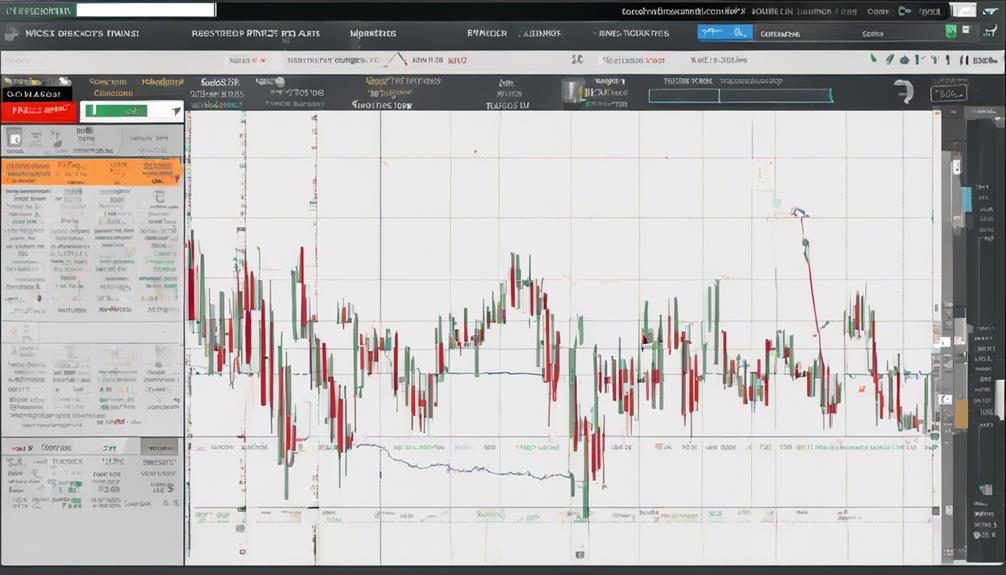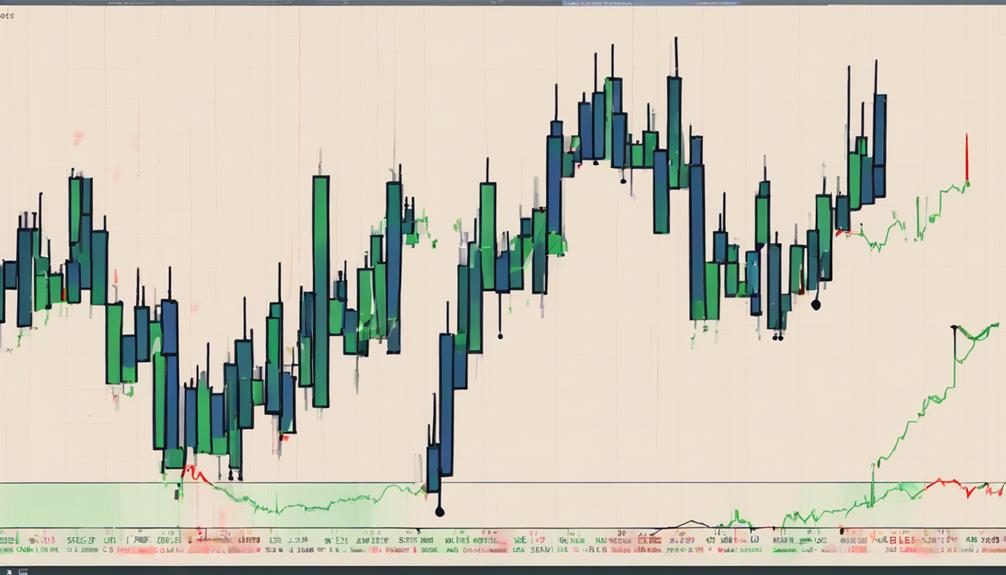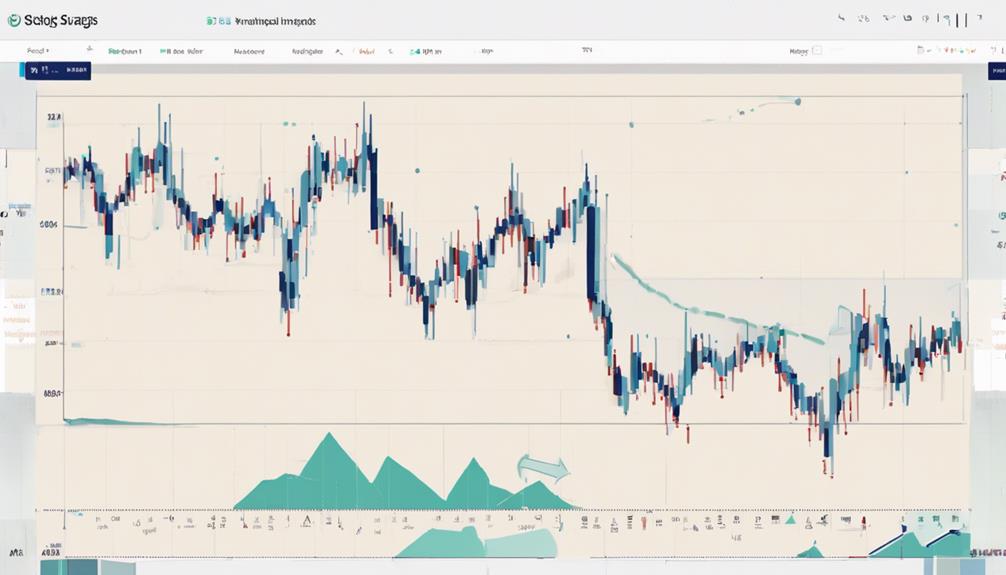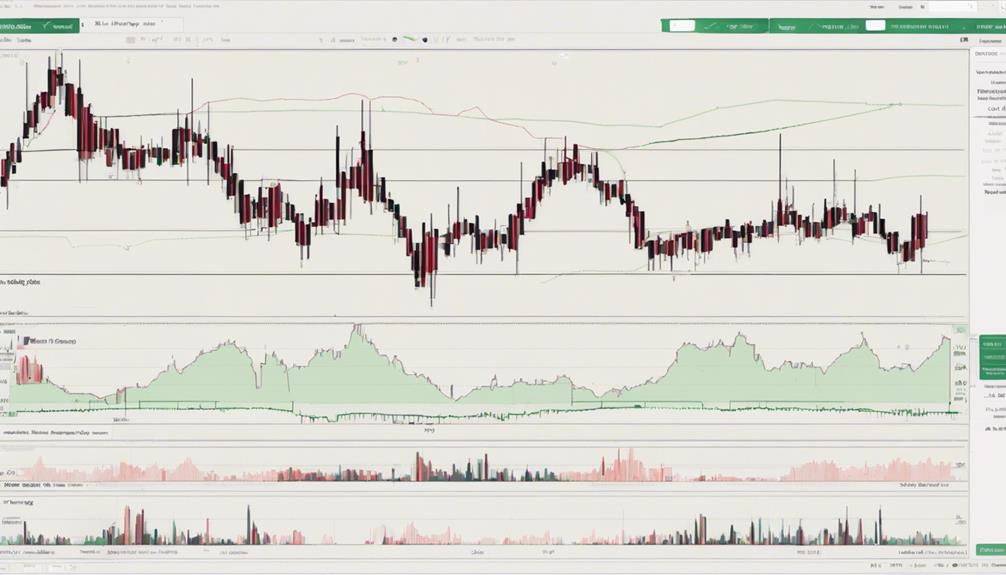The Zig Zag indicator has gained recognition in the realm of investment analysis for its ability to provide valuable insights that can influence decision-making processes. Its unique approach in filtering out market noise and highlighting significant price movements offers investors a clearer perspective on potential trend shifts.
By leveraging historical data to identify patterns and key levels, the Zig Zag indicator equips traders with a tool that goes beyond conventional analysis methods. Its impact on investment strategies is significant, prompting a closer examination of how this indicator can contribute to optimizing investment outcomes.
Benefits of Zig Zag Indicator
The utilization of the Zig Zag Indicator in investment analysis offers distinct advantages due to its ability to effectively filter out market noise and emphasize significant price movements. This Financial technical tool connects swing highs and lows, creating Zig Zag lines on the chart that help traders identify trends and potential support and resistance levels in the market. By focusing on significant price changes, the Zig Zag Indicator enhances clarity in price analysis and assists in confirming trend directions.
Moreover, it aids in spotting chart patterns like double bottoms and head and shoulders formations, providing valuable insights to traders. The Indicator's ability to reduce noise and highlight important price movements makes it a valuable tool for those seeking a clearer understanding of market dynamics and looking to make informed investment decisions based on technical analysis.
Practical Uses in Investment Analysis

Utilizing the Zig Zag indicator in investment analysis provides investors with a practical tool to identify trend reversals and filter out short-term price fluctuations, aiding in making informed decisions based on significant price movements. The indicator offers several practical uses in investment analysis:
- Identifying Swing Highs and Lows: The Zig Zag indicator helps in pinpointing crucial swing highs and lows in price movements, allowing investors to gauge the strength of a trend.
- Determining Support and Resistance Levels: By analyzing historical price data, investors can use the Zig Zag indicator to identify key support and resistance levels, aiding in strategic entry and exit points.
- Spotting Chart Patterns: Investors leverage the Zig Zag indicator to recognize chart patterns such as double bottoms and head and shoulders, which can signal potential trend reversals or continuations.
Understanding Zig Zag Indicator Signals

In investment analysis, a deep understanding of Zig Zag indicator signals is essential for identifying potential trend reversals and significant price movements. The Zig Zag indicator is adept at filtering out short-term fluctuations in price, allowing investors to focus on significant price changes that may indicate a shift in market direction.
By marking swing highs and lows, this tool highlights potential areas of support and resistance, aiding in the identification of key levels in the market. Moreover, Zig Zag signals can assist in recognizing various chart patterns such as double tops or bottoms, providing valuable insights into potential future price movements.
Ultimately, comprehending Zig Zag indicator signals plays a crucial role in enhancing decision-making processes within investment analysis, enabling investors to anticipate and react to significant price changes effectively.
Advanced Strategies for Investment Success

Building upon the foundational understanding of Zig Zag indicator signals, advanced strategies for investment success involve leveraging sophisticated techniques to optimize decision-making processes and enhance overall portfolio performance.
By incorporating Fibonacci retracement levels with the Zig Zag indicator, investors can identify potential reversal points with greater accuracy.
Combining the Zig Zag indicator with moving averages enables traders to confirm trend direction, leading to more precise entry and exit points in the market.
Additionally, utilizing multiple time frames with the Zig Zag indicator allows for a comprehensive analysis aligning short-term and long-term trends for better decision-making.
Volume analysis can be integrated alongside the Zig Zag indicator to validate price movements and assess trend strength effectively.
Experimenting with different parameter settings on the Zig Zag indicator is crucial to adapting to specific market conditions and trading strategies, ultimately enhancing the tool's performance and increasing the likelihood of successful investments.
Incorporating Zig Zag Indicator in Trading

Enhancing trading precision through the strategic integration of the Zig Zag indicator is a key aspect of optimizing investment strategies and decision-making processes. By incorporating the Zig Zag indicator into trading practices, investors can effectively analyze historical price movements to identify potential support and resistance levels.
This tool can be especially valuable when used in conjunction with Elliott Wave Theory to confirm trend directions and locate entry and exit points. Moreover, the Zig Zag indicator assists traders in recognizing reversal patterns such as double bottoms and head and shoulders formations, providing insights into possible market turning points.
Its ability to filter out market noise helps reduce false signals, enabling more informed trading decisions. Overall, the Zig Zag indicator serves as a valuable asset in navigating the complexities of the market, offering traders a systematic approach to enhance their trading strategies and improve overall performance.
Why is the Zig Zag Indicator Considered Important for Investment Analysis?
When it comes to investment analysis, the zig zag indicator reliability is highly valued. This tool effectively filters out market noise and provides clear signals for potential trend reversals. Traders find it crucial for identifying key turning points in the market, aiding in making informed investment decisions.
Frequently Asked Questions
What Is the Zigzag Indicator Used For?
The Zig Zag indicator is utilized to filter short-term price fluctuations, pinpoint significant trend reversals, and identify support/resistance levels by connecting swing highs and lows based on set percentage movements. It aids in analyzing historical data to highlight key turning points.
What Is the Best Indicator for Investment?
The best indicator for investment varies based on individual preferences and market conditions. Popular options include Moving Averages for trend identification, Relative Strength Index for overbought/oversold signals, and MACD for momentum analysis. Each serves a unique analytical purpose.
How Accurate Is Zigzag Indicator?
The accuracy of the Zig Zag indicator varies with market conditions and user-defined parameters. It excels in identifying significant price changes and trend reversals. To enhance precision, adjust settings to align with trading style and asset characteristics.
What Is the Zigzag Line Strategy?
The zigzag line strategy is a technical analysis tool that connects swing highs and lows to identify trend reversals. It filters short-term price fluctuations, focusing on significant changes to help traders spot support/resistance levels and make informed entry/exit decisions.
Conclusion
In conclusion, the Zig Zag indicator is a valuable tool for investment analysis. It has the ability to filter out short-term fluctuations, identify trend reversals, and enhance the accuracy of investment decisions. By providing a retrospective analysis of historical data, this indicator can help investors make informed choices based on underlying trends.
Incorporating the Zig Zag indicator in trading strategies can lead to improved investment success. It is an essential tool for investors seeking to navigate the financial markets with confidence.


